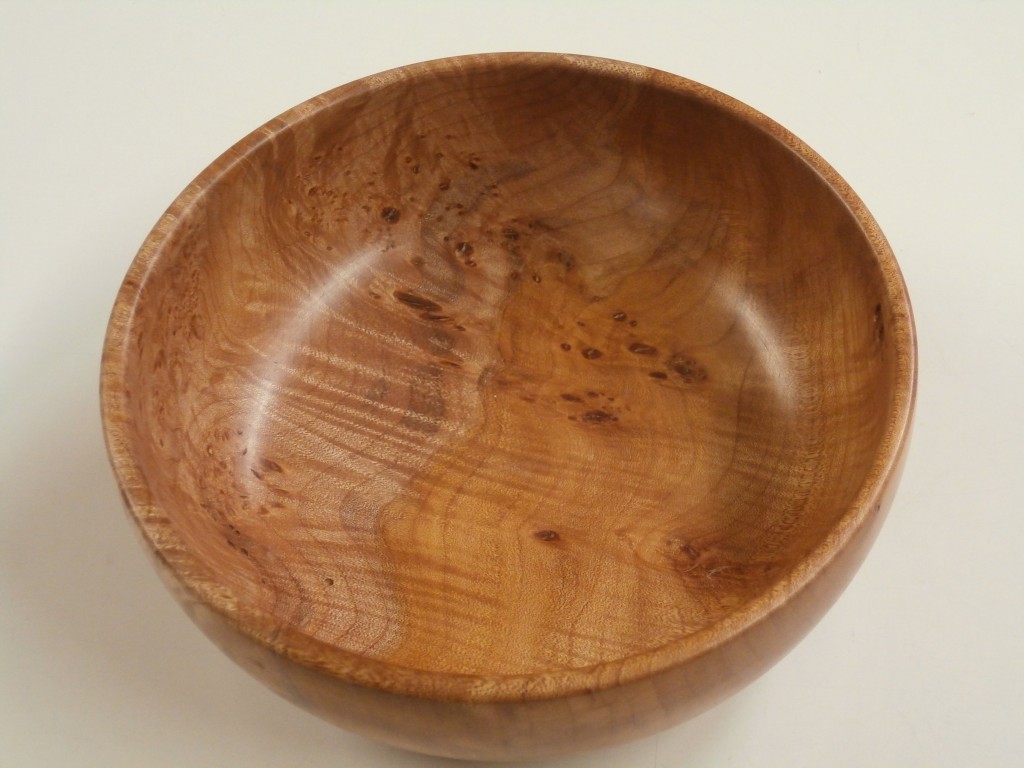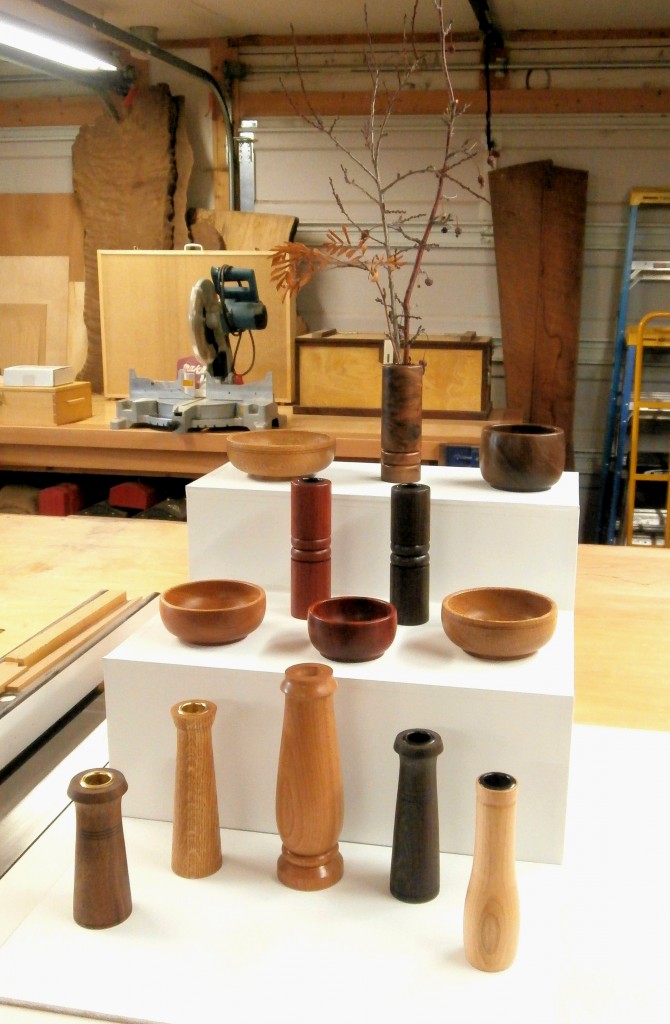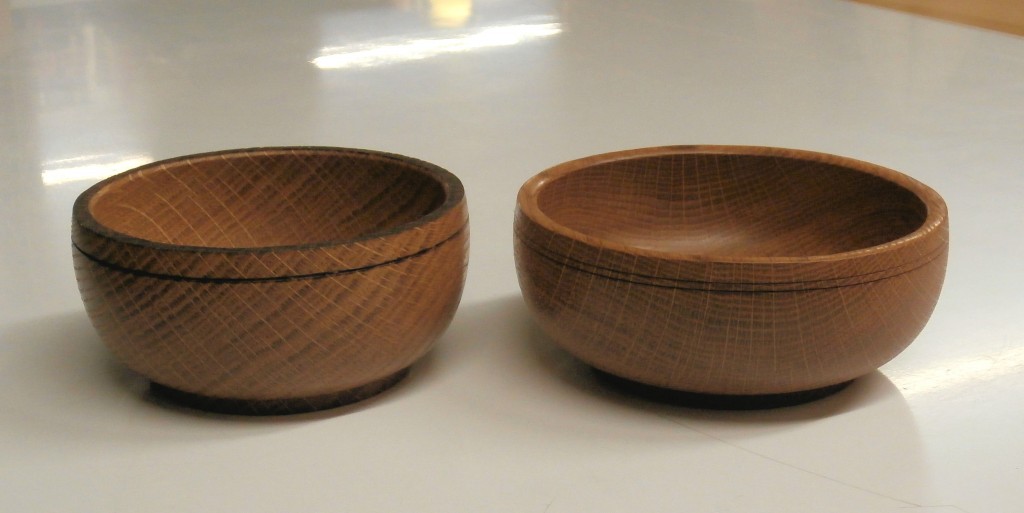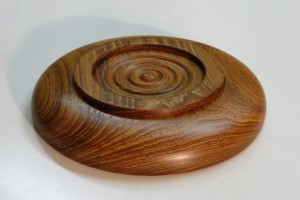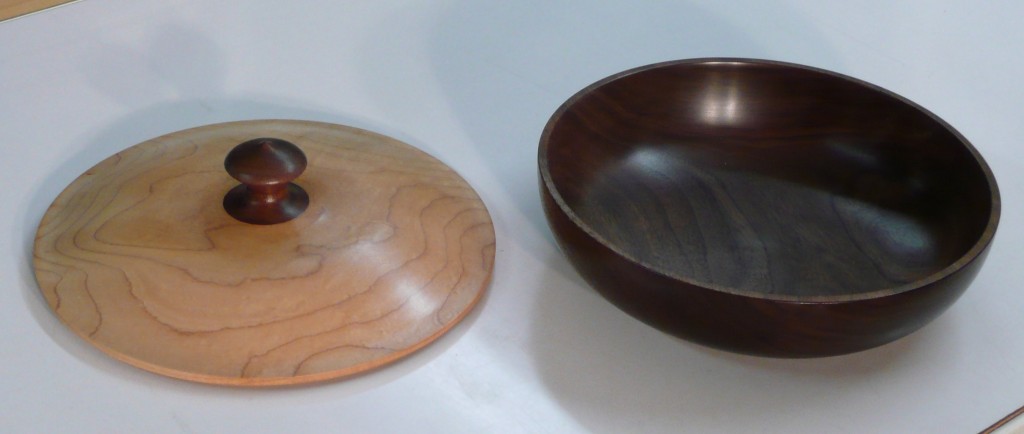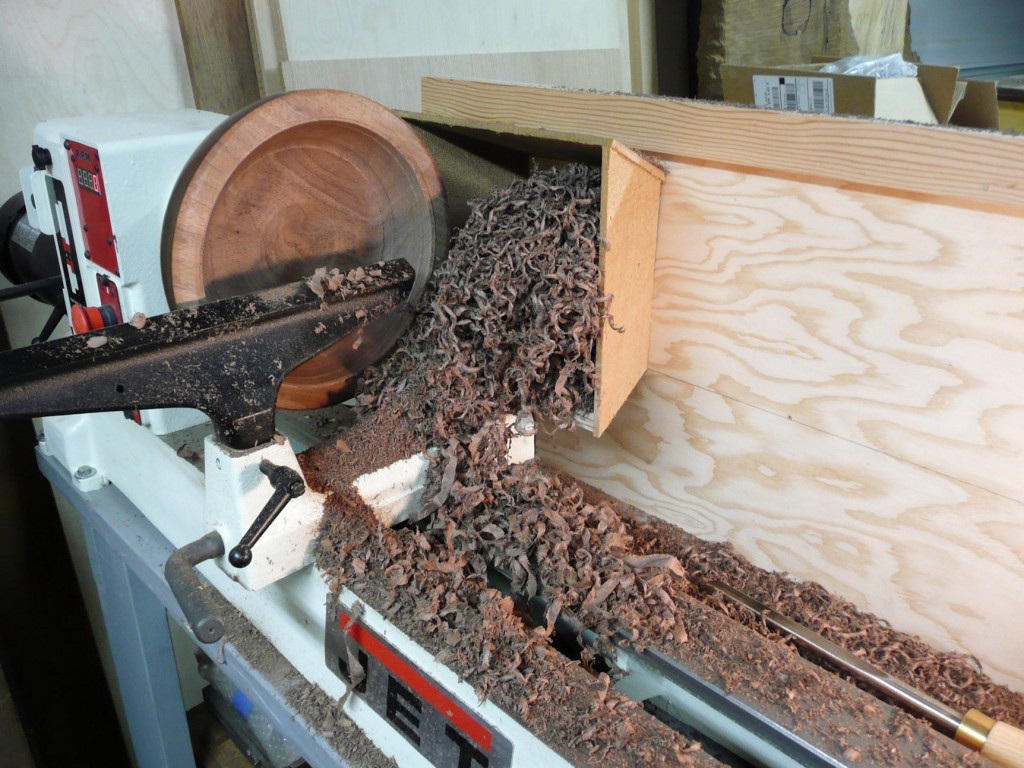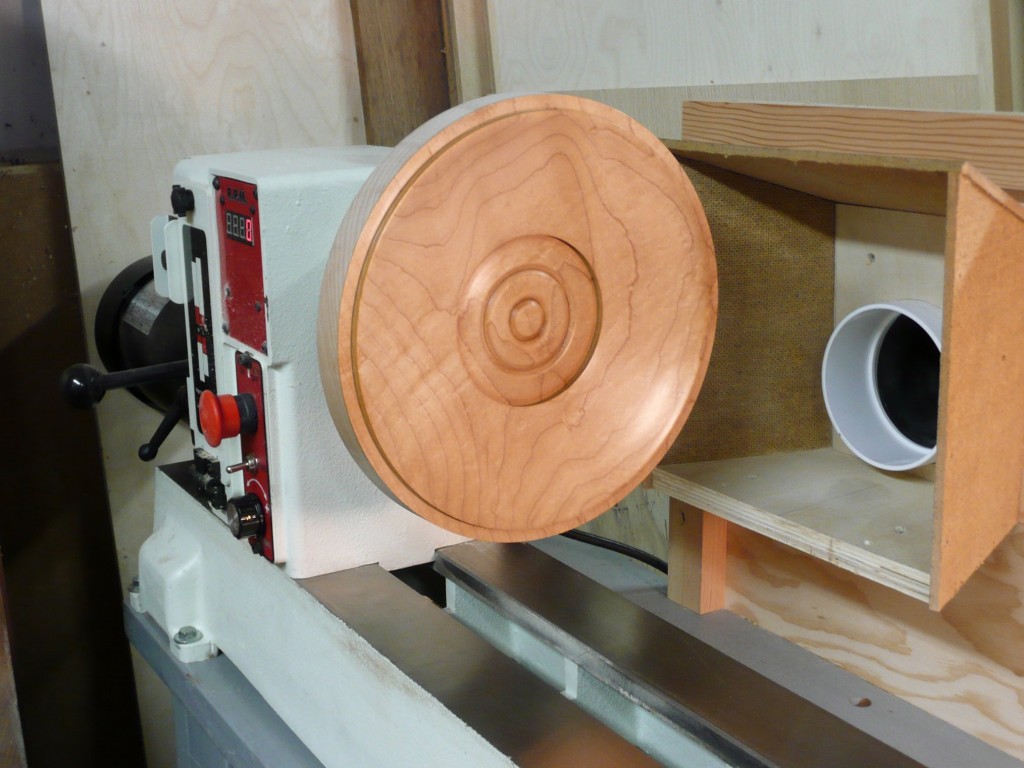I finished this 6″ W x 4.5″ H bowl today. It’s Goncalvo Alves, a heavy and very dense tropical hardwood. I’m happy with the result, although turning it was a lengthy and tedious process. This small bowl weighs 4~5 pounds, at least double what black walnut would weigh. I bought the bowl blank 20 years ago and today I would choose native hardwoods exclusively. Like all my bowls thus far, it’s finished with pure beeswax. (Click on any image to enlarge)
Category Archives: Bowls
Letting the Inside Out
Flared Rim Black Walnut Bowl
Cottonwood Bowl
Cottonwood is a very soft wood and for that reason it is not traditionally thought of as material for turning bowls. However, this morning I drove past a couple of guys who had just cut down a dead cottonwood tree in a front yard and I asked for and was given one of the rounds to cut up and try to turn. Although dead, the tree had been standing out in the weather and was relatively wet, making it difficult to cut cleanly with turning tools. Sanding was slow as well. But a pleasing shape can still be realized with a little patience. This bowl is 5″ deep and a little over 6″ across.
Big Leaf Maple Burl Bowl
Pots & Bowls
Two White Oak Bowls
These two bowls were turned from two blocks of wood that were originally side by side in the same oak board, yet they differ substantially in appearance. The bowl on the right came from the center of the board, closer to the heart of the tree, and the one on the left was a little further from the center. The wood grain effects are noticeably different, and the coloring of the wood is slightly different. The curve of the sides varies slightly from one to the other, and the diameter of the bowl on the right is about one inch greater. Offered for sale together, a discerning buyer would have a clear choice to make. There’s no question which one I would pick. (Click on the image to enlarge)
New White Oak Bowl

I’m partial to this basic “containing” bowl shape and here it is in white oak. The oak has a nice warm brown tone when finished with just beeswax. I used another piece of oak to burnish the edge while the bowl was spinning on the lathe. (Click on any image to enlarge)

Teak Dinner Plate
Turning a plate on a lathe is a challenge because of the difficulty in holding the relatively thin piece of wood. However, the task has been made much easier in recent years with a 4-jaw, self centering chuck that can grip either in expansion mode inside a turned, shallow void on the bottom, or contraction mode around a turned ring on the bottom. (Click on any image to enlarge)
Teak is a naturally oily wood. For a plate on which food will be served, and which is then going to go into soapy water, the natural oil helps preserve the wood and keep it from drying and cracking.
Black Walnut Bowl with Maple Lid
I turned this 12″ wide, 3″ deep, black walnut bowl with the intention of also turning a lid to fit. For the lid, I used a piece of northern sugar maple with a block of walnut glued to it for the knob, and turned the two simultaneously. The lid has an indent under the lip to match the inner diameter of the bowl. The fit is such that there is a slight suction effect when the lid is lifted. (Click on any image to enlarge)
The bowl is large enough from which to serve food, such as fruit or green salads. And if it is used to serve something like pasta, then the lid can serve as a cover. This bowl, and all my bowls so far, have been finished solely with my own recipe for a “food safe” finish: 100% pure, organic, filtered beeswax combined with pharmaceutical grade mineral oil.
Here is the bowl on my new Jet 2HP lathe. I intentionally left the dust collector temporarily turned off to give some idea of the volume of shavings produced by my bowl gouge during the hollowing process.
And finally, I’ve included a photo showing the underside of the lid while still mounted on the lathe. The indent under the lip was reduced incrementally to fit, using the completed bowl as a gauge.











